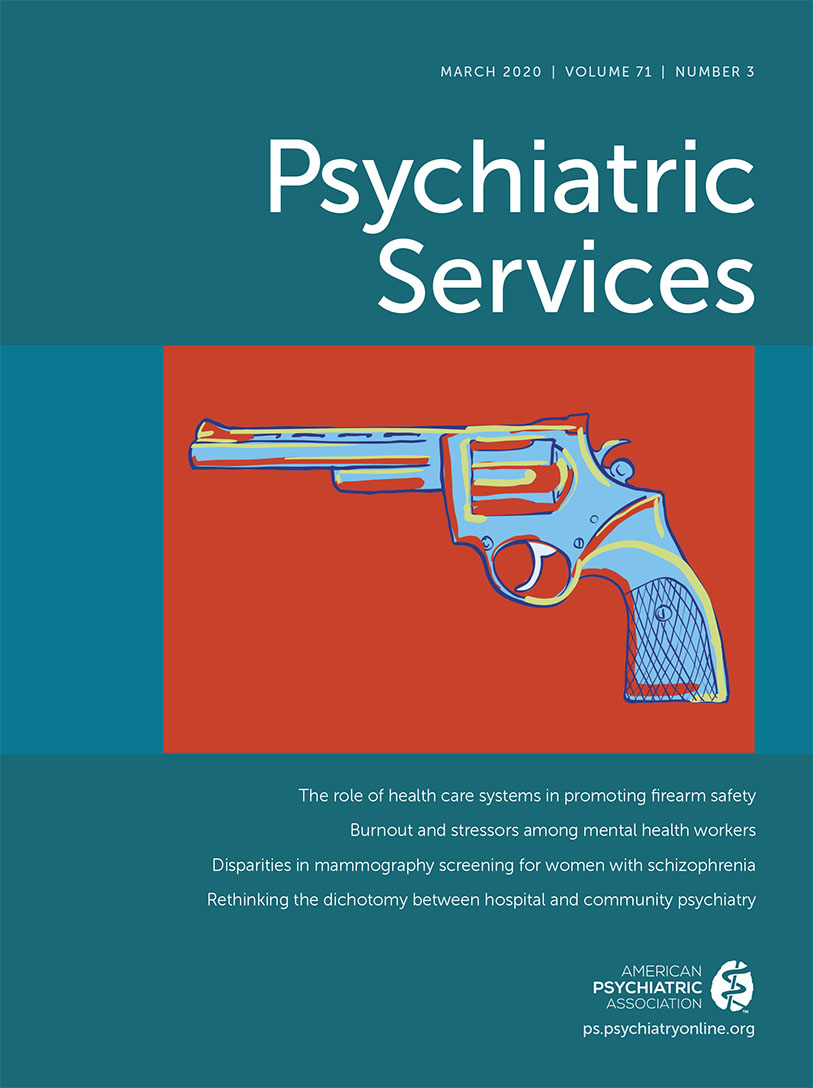Burnout: Old Wine in New Bottles
Burnout, loosely defined as a work-related experience of exhaustion and detachment (depersonalization) and a sense of low personal accomplishment, has become shorthand for emotional distress. Burnout results from structural and systemic issues in the workplace that affect one’s degree of control, strengths and vulnerabilities, and other factors.
In this issue, three articles focus on clinician responses to work stressors. Fukui et al. (1) collected data from 186 community mental health providers and differentiated intention to leave a job from actual departure. Although the two were correlated, job stressors correlated highly with intention but provider characteristics correlated more with departures. Among 183 Italian inpatient mental health providers, Aguglia et al. (2) found that experiencing workplace violence contributed to burnout. Hilton et al. (3) found an increase in trauma symptoms among 761 psychiatric inpatient mental health staff on their exposure to critical events as well as chronic stressors.
If employers really cared about the contentment of employees in addition to their performance, what should be done? Many great minds are trying to identify and address a “burnout epidemic” resulting from shifting broader cultural expectations and demands. In 2019, both the World Health Organization and the National Academy of Medicine (NAM) issued evidence-based guidelines on mental health and the workplace emphasizing the necessity of structural solutions. But, as Richard Friedman asks in a 2019 New York Times editorial, a solution to what? If up to half of health clinicians (as well as 45%–60% of their trainees and 23% of American workers, according to a recent Gallup poll) feel burned out, where to begin?
Note that for most of human history, the well-being of workers was rarely of concern. People did their jobs and were dispensable if they chose to leave. What changed to make this problem so important? From an individual’s perspective, at least for clinicians, work has become an expression of one’s identity. On the positive side, there is the opportunity to find the niche that best fits one’s skill set and passions. However, when systemic and structural issues and demands interfere, leading to a sense of burden and disappointment, something seems wrong with oneself, one’s identity. Have we lost our moral agency? From a cultural perspective, expectations around work and its intrusions in our lives (“work-life balance”) have changed. The demands of living in a “wired” world—with less personal face-to-face connection, less downtime, and extraordinary accountability—interfere with devoting one’s time to what is fulfilling and expressive of oneself at work. For example, in the health professions, it is a struggle to live in the electronic records lane—primary care physicians spend an average 6 hours a day “treating the record”—where health technology has failed to make the end user’s life more effective and efficient.
Improving the situation requires significant individual, employer, governmental, and societal investment, with unknown long-term positive returns. There are no simple solutions; however, if we are serious, multidimensional programs and pathways involving individuals, professions, employers, and larger societal systems will need to be addressed.
The individual needs to make difficult choices regarding work-life balance. We must take better care of ourselves in an era that does little to counteract the growing isolation of modern life. Disconnecting from technology and reconnecting in person with patients, colleagues and trainees, and professional/nonprofessional support groups is one necessary step. As experienced clinicians, what message are we giving trainees if we cannot teach them to understand the importance of listening to and learning from their patients as well as from experienced colleagues beyond that which is knowable on the Internet?
However, one should not assume burnout is simply something awry within individuals. The NAM report recognizes collective organizational responsibility in addressing work stress. It urges employers to recognize that cumulative demands can create a toxic environment and outlines steps for addressing the problem, which requires remediation beyond employee wellness options—now a multi-billion-dollar solution to burnout. For example, solutions involve creating and maintaining positive workplaces, attending to stressors experienced by trainee and early-career clinicians; reducing administrative burdens; and attending to the end-user clinician experience of health technology.
The issues we health professionals struggle with reflect the dilemmas of contemporary life. If employers are to improve the workplace experience, governmental regulatory and payment systems will need to be reconsidered and a national research agenda developed to address the many knowns and unknowns. A 1999 Institute of Medicine report sparked the effort to improve the quality of care of our patients. Now it is time to do the same for ourselves.
1 : Characteristics and job stressors associated with turnover and turnover intention among community mental health providers. Psychiatr Serv 2020; 71:289–292Link, Google Scholar
2 : Workplace violence and burnout among mental health workers. Psychiatr Serv 2020; 71:284–288Abstract, Google Scholar
3 : Contribution of critical events and chronic stressors to PTSD symptoms among psychiatric workers. Psychiatr Serv 2020; 71:221–227Abstract, Google Scholar



